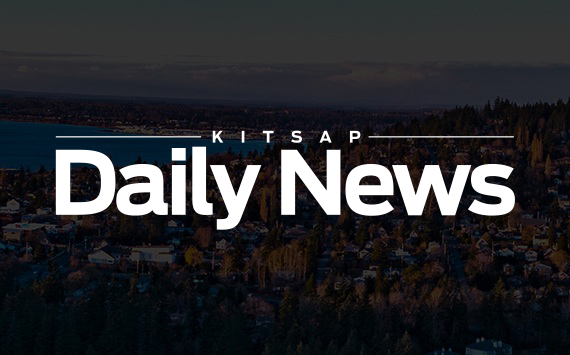Washington State Ferries is hoping to turn the tide around late ferries with the recent return of M/V Wenatchee to service July 18, and a new contract to build three new hybrid-electric ferries to start deliveries in 2029.
Regarding reliability, WSF planning manager Jason Rodgers said ferries can be late for many reasons including higher ridership, navigational restrictions and having a 20-year-old sailing schedule.
“If you don’t have time to do all these sailings, eventually you start falling further and further behind. We see that, especially on weekends, the high ridership combined with going a little slower means by middle of the day, they’re fifteen minutes behind,” he said, “By the afternoon, they’re thirty minutes behind and that’s just inherent to the schedule on this route.”
Over the 4th of July holiday weekend, Rodgers said WSF got closer to 2019 pre-pandemic ridership levels.
Having an old schedule can also impact reliability, as ridership has increased, and vessels used to operate faster, Rodgers said. Ferries also run slower in part to reduce carbon emissions and minimize environmental impacts for whales.
“The more people that ride the ferry, of course, the longer it takes to look to unload the ferry, and reload the ferry. That’s been one of the single biggest things we’ve seen on the Bainbridge Island route,” he said.
Between Jan. 1 and March 31, WSF carried just over 1 million passengers on the Seattle/Bainbridge route or roughly 25% of all passengers carried systemwide, per WSF statistics.
Systemwide, WSF reported 95,361 total passengers on Saturday, July 26, the busiest ridership day since Aug. 31, 2019.
Navigational challenges
Rodgers said for the Seattle/ Bainbridge route, vessels navigating into Eagle Harbor have restrictions, including only one boat can be in the channel at a time due to its narrowness.
“We work hard to keep the ferry separated. So if you start seeing a big delay on one ferry, the other ferry is going to end up being late as well,” he said. “That’s just inherent to the navigation restrictions on the route.”
Operational challenges
Rodgers also said WSF will hold vessels for priority emergency calls such as fire/EMS transports, which can further delay departures.
WSF doesn’t directly measure the economic impact of ferry reliability or the number of impacted passengers in the event of a cancellation, Rodgers said.
Delays are determined in part by looking at traffic cameras at ferry terminals and along state highways; Rodgers said the process isn’t an exact science.
Rogers said both crew and vessel availability can further impact reliability.
“If there’s a crew member that called out sick or their car breaks down, our dispatch team has to go try to find a replacement, and oftentimes they’re doing it at the last moment,” he said. “Sometimes that also leads to a cancellation, which, fortunately for Bainbridge, has been relatively rare.”
Regarding vessel maintenance, Rodgers said WSF has been able to add a second shift at Eagle Harbor Maintenance Facility, where the majority of maintenance occurs. He hopes that will bolster the agency’s ability to complete repairs and restoration work required to keep vessels operational.
“There’s all different kinds of factors that can cause a ferry to be late, and then the schedule compounds itself throughout the day because of that one incident,” he said.
Rodgers discussed the likelihood of WSF adding a third boat to the Seattle/Bainbridge route.
“We’re looking to manage the entirety of the system, and providing the routes we serve are legislatively mandated. So the state legislature is the one that makes those decisions,” he said.
Rodgers said WSF’s primary goal is to return to full-service before adding additional capacity. He said WSF has 18 vessels in service out of a fleet of 21.
“We don’t have the ability to add service anywhere right now, even if we wanted to,” he said, adding WSF is part of the state highway system.
Western Washington University Center for Economic Research released a study in December 2024 that reviewed economic impacts of the WSF system. The study estimated the economic impact of ferry service for the Seattle/Bainbridge route for Kitsap County being at just over $28 million based on 2023 data.
Lindsay Browning, BI chamber of commerce executive director, said: “Many of our island’s small businesses, especially those in the Winslow corridor, depend on predictable customer access in the form of visiting tourists. When ferry reliability is compromised or sailings are cancelled, these businesses see a demonstrable drop in sales.
“Additionally, businesses throughout our community are impacted by the supply chain disruption that ferry delays and cancellations cause. This is true across many industries, including retail, hospitality, manufacturing and professional services, with the disruption affecting both revenue and service delivery.”
Rodgers said he’s optimistic about the future of WSF’s work to restore reliability.
“We’re not canceling sailings because we feel like it. We’re canceling sailings only if we absolutely have to,” he said. “Our crew wants to show up to work; they want to get people where they want to go.”



